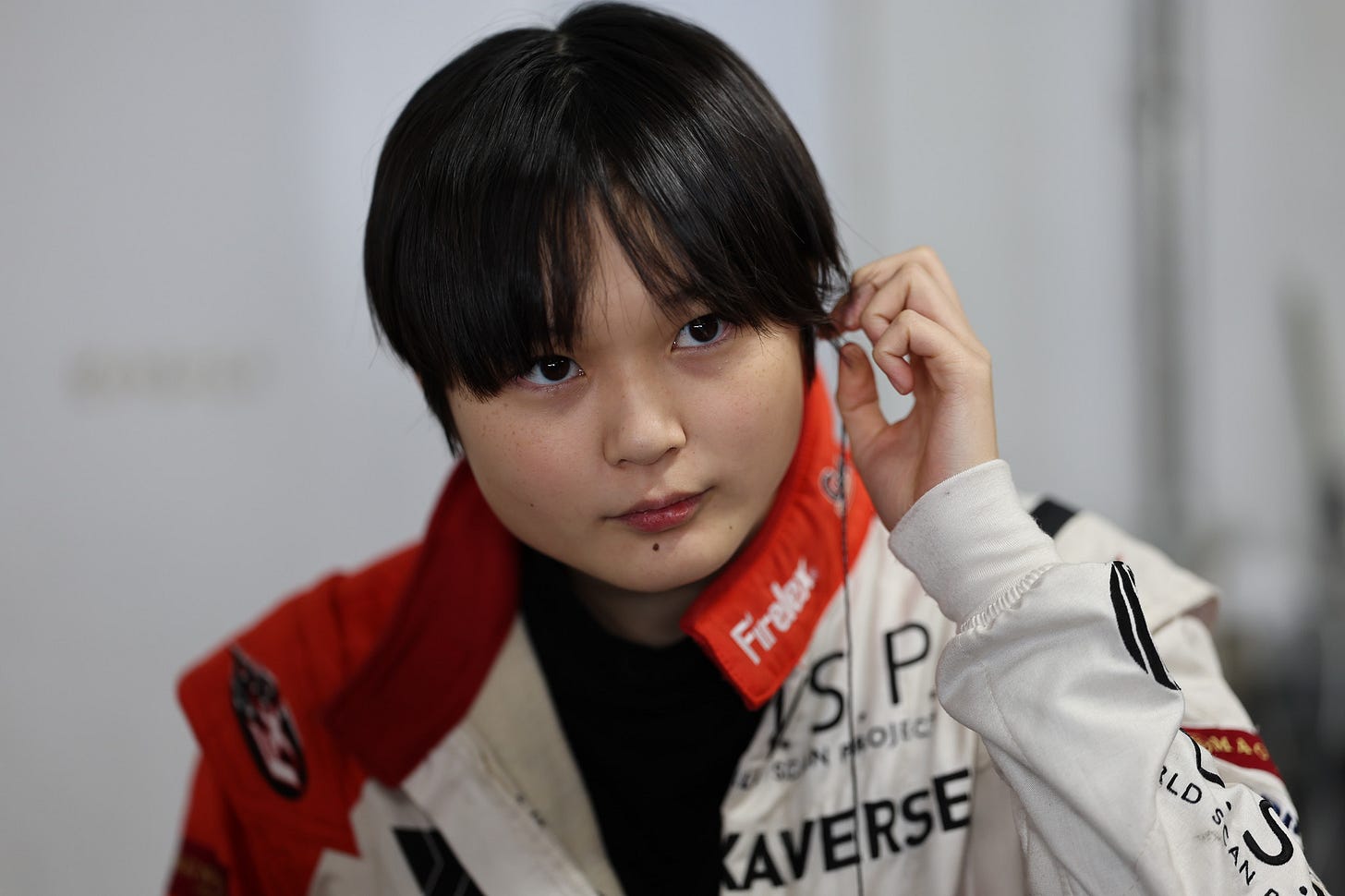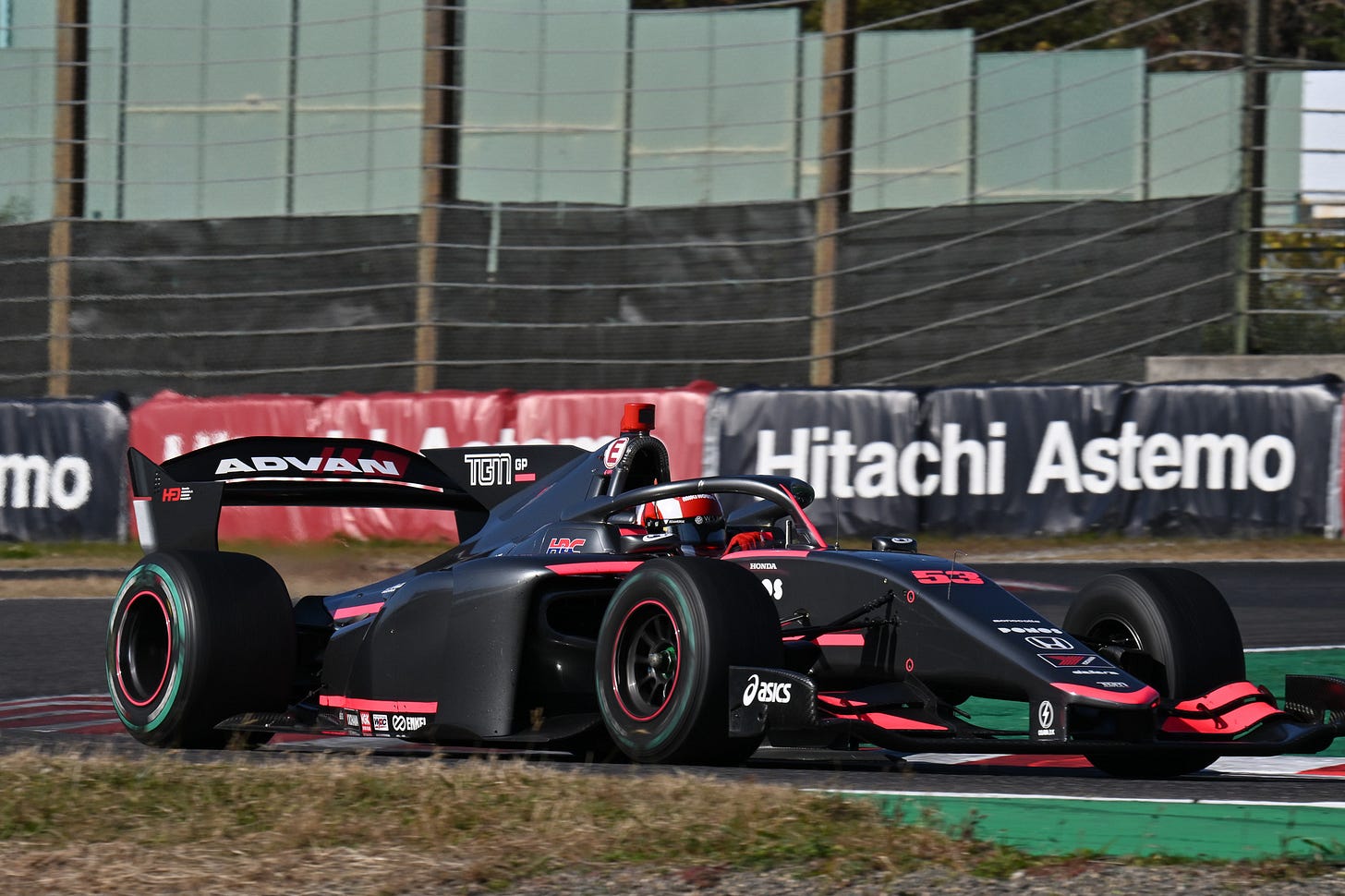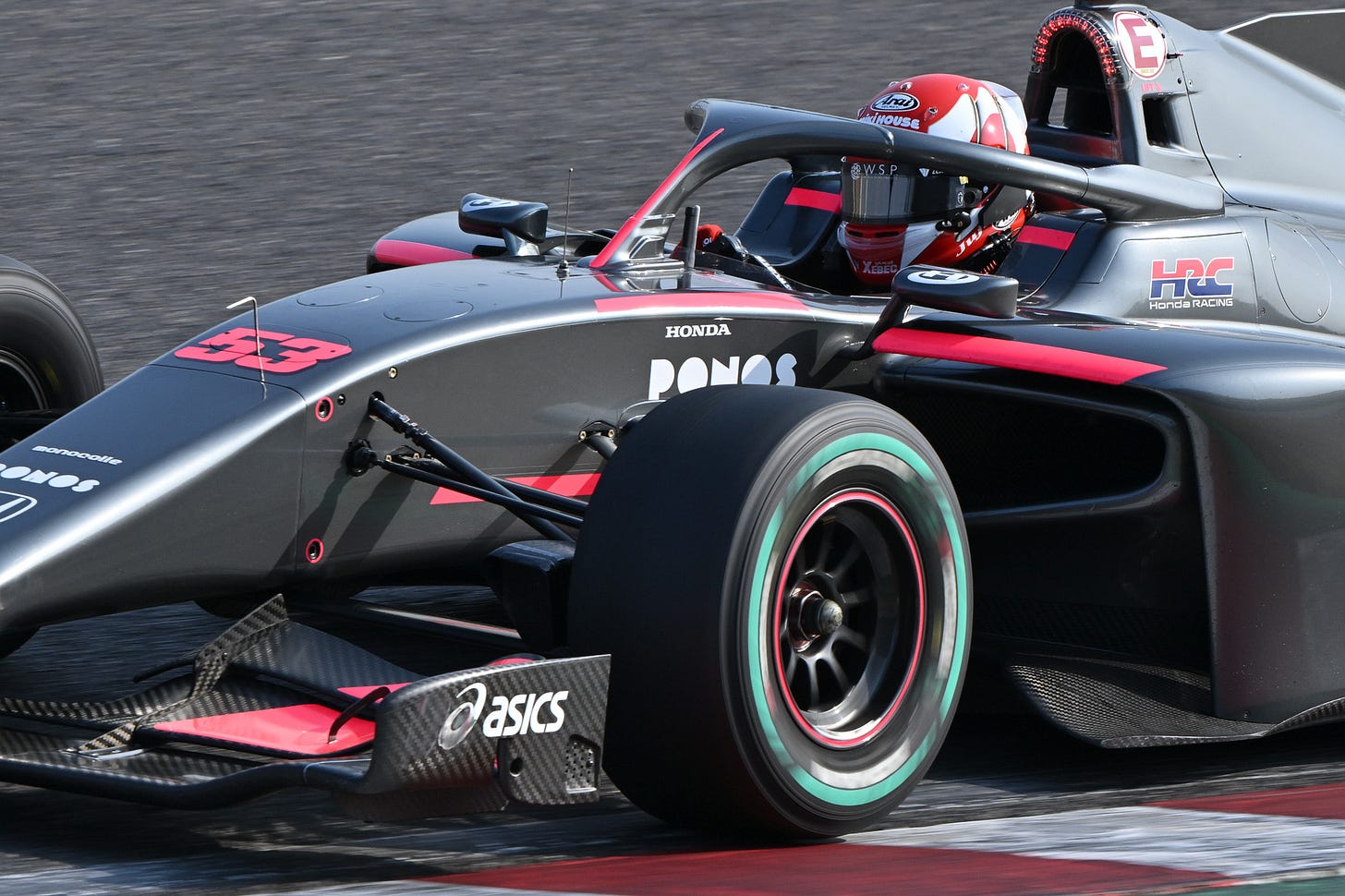Has Juju Noda shown she can hack it in Super Formula?
A self-confessed Juju Noda sceptic gives his thoughts on how the 17-year-old performed in this month's Suzuka test...
All photos: JRP
今回は少し微妙なトピックなので、誤解を防ぐために日本語版はありません。
Full disclosure: I have always been something of a sceptic when it comes to Juju Noda (hereafter referred to as simply ‘Juju’). Her exploits at a young age in Formula 3 machinery failed to impress me. Likewise her wins in Danish Formula 4, a category hardly renowned for moulding global stars of the future. Her single season in W Series was underwhelming to say the least. Even her Euroformula Open success was tainted by the saga of her being allowed to run at a reduced minimum weight.
But, during this month’s Super Formula test at Suzuka, for the first time I felt the hype surrounding Juju may in fact have some justification after all. Despite the pressure of the massive fan and media presence there to see her at the wheel of the #53 TGM Grand Prix car, she acquitted herself well, belying her relative lack of experience with a smooth, mistake-free three days of running. And it appears she has put herself in a strong position to secure a full-time 2024 seat with the team.
This is not to say I think Juju is going to come out of the blocks and score points, challenge for podiums or anything like that, should she indeed race in 2024. However, she showed enough at Suzuka to suggest that, with the help of a team of the calibre of the Servus Japan-run TGM squad, she would not be out of place on the Super Formula grid. At the very least, fears she would not be able to lap fast enough to qualify or that she wouldn’t be able to hack it physically in the Dallara SF23 proved unfounded.
Juju’s participation in the test came as a big surprise to most, all the more so when you consider her career path so far. Going to race in Danish F4 in 2020 was understandable given the low minimum age requirements, especially compared to the Japanaese series. But a planned campaign in US F4 in 2021 fell apart amid a ‘screaming match’ between her father Hideki and team owner Jay Howard, as I wrote last year for Motorsport.com, resulting in a second year in Denmark that was less convincing than the first. The move to W Series in 2022 was logical from a financial perspective but ultimately did little to enhance her reputation, and there were doubts over whether she would see out the second year of her deal to race in the all-female series before the championship collapsed over the following winter anyway.
This year, Juju was back with the family team for twin campaigns in Euroformula Open and the Italian F2000 Trophy, the latter being a category I had never heard of before it cropped up in a Noda Racing press release. Even against a depleted grid, Juju’s victory at Paul Ricard in Euroformula Open deserves some recognition, but sadly this was clouded by the controversy of the organisers handing her a 20kg weight break at the start of the season simply for being female. The irony was that by the time of the Paul Ricard race, this had been cut to only 5kg. Withdrawing from the series altogether after it was announced that the weight break would be abolished altogether only contributed further to the poor optics, even though the real reasons were unrelated (the organisers wanted her to withdraw from the Italian F2000 Trophy and stop using Enkei wheels, demands that were deemed unacceptable).
The overall impression given by Juju’s career up to now is that of trying to avoid overly stiff competition, hence my scepticism - and my huge surprise when I first discovered that she would be taking on the huge challenge of pitting herself against a full field of professionals, including some serious Formula 1 aspirants, in the post-season Super Formula test at Suzuka, and in the full glare of the Japanese media.
Shortly after the news of Juju testing at Suzuka was made official, Noda Sr, himself a veteran of 67 starts in Formula Nippon after a very brief Formula 1 career, played down expectations of his daughter. In an interview with Motorsport.com Japan, Noda said: “It’s ok if she is last. It would be normal if she couldn’t drive, and if she’s last, it’s to be expected. Driving before she is ready and getting in the way of other drivers wouldn’t be good, but from what I’ve seen, she is not at that level,” he added in an apparent reference to a late-season BOSS GP outing in a Formula Renault 3.5 car.
The first target for Juju was to clear the 107% mark, which she duly did in the first session of the opening day of the test. By the end of that day, she was 4.2 seconds off the pace set by Sho Tsuboi. But it was on the second day that this writer really sat up and took notice of Juju’s performance, as she improved by a massive 2.7 seconds to end up only 2.2s shy of pacesetter Kamui Kobayashi. It took fellow TGM rookie Rasmus Lindh, a podium finisher in Indy NXT, until the final session on Friday to beat Juju’s time, and even then he only did so by a little over a tenth of a second.
Now, there are some caveats to note. Juju was driving the #53 car that Toshiki Oyu took to pole at the same track in April, so clearly she remains a long way from exploiting the car’s potential, and that’s before you consider the advantage of her small weight compared to her rivals. Lindh reckons a technical issue on Friday morning, when conditions were more favourable, stopped him going faster. And Nobuharu Matsushita, who drove the #55 TGM car on Wednesday before handing over to Lindh, was clearly on a much higher level than either of the TGM rookies.
Even so, Juju answered the critics with a best lap time that, had it been produced in qualifying for the final round of the season, would have not put her last in either Q1 group. And she did so despite being near-permanently surrounded by TV cameras and various hangers-on throughout the entire three days. If she was feeling the pressure, she never showed it; rather she seemed to be genuinely enjoying herself.
Considering the coverage she got from mainstream news outlets such as NHK, the Japanese equivalent to the BBC in the UK, the PR boost Juju gained from the test was surely more than worth the asking price of taking part. Assuming the budget for a full season - understood to be around 200 million yen, or 1.4 million US dollars - can be raised, the question that the Noda family and their backers must now ask themselves is this: are they content to treat 2024 as a learning year in which Juju’s main focus would be simply to finish races, and perhaps score a point or two if all goes well?
While the fanfare surrounding Juju now is considerable, inevitably it will fade unless she starts to prove she can do more than simply keep the car pointing in the right direction and circulate at a respectable pace. Perhaps the hype train could be just about kept on the rails for a full season, given that it’s only seven weekends long and they are fairly well spaced apart. But would that be the case for a second season unless she was at least able to consistently score points and occasionally more than that?
What’s more, Super Formula is not a category that’s welcoming to drivers low on experience, as 2023 TGM driver Cem Bolukbasi can attest. There’s just a single 90-minute practice session before qualifying for each round, and only six sets of tyres to use for a whole weekend (three of which must be carried over). Testing opportunities are non-existent outside of official tests, of which there are just three a year.
Considering that Juju is likely to be three years younger than the next-youngest driver on the grid in 2024, the best thing for her would be to treat Super Formula as a three-year programme at the least. But do her father and her backers have the patience for the long haul? The answer to that question could come to define her career.







